Way back in digital camera history (circa late 2008), if you wanted to have an interchangeable lens camera system that produced great image quality, your only choice was a large DSLR system by Canon, Nikon or other companies. Enter the Micro 4/3’s system. This was a system built from the ground up using a smaller sensor than DLSR’s and also eliminating the mirror box and pentaprism as well. This results in a system that is markedly smaller than traditional DSLR’s. I quickly bought into the system and hoped it would be everything I had in a big DSLR in a small compact package. My first foray into m4/3 was with the Panasonic GF1. While it was a great little camera, it just didn’t quite produce the image quality I was hoping for. So I sold all the gear and kept using my Nikon D700. Panasonic iterated numerous models over the next few years and another one caught my eye, the G3. This had an all new 16MP sensor and the performance seemed to finally catch up to a DSLR. I bought back into the system and soon my D700 was sitting on the shelf more and more. While the G3 wasn’t perfect, it was good enough at the time and let me carry a small camera that I felt did not compromise on quality. So I sold all of my Nikon gear and never looked back. The G3 could never compete with a DSLR in terms of controls and speed of use, but I knew that eventually, a m4/3 camera would be released that would satisfy those criteria.
In January, pictures were starting to leak about Olympus’s next mirrorless camera. When I first saw these pictures, I was intrigued. When Olympus finally revealed the entire camera and the specifications in February, I was hooked. I didn’t care about the reference to the vintage OM series of camera’s as almost all of my shooting has taken place in the digital world. What got my attention on this camera was the dual control dials on top, the built in electronic viewfinder (EVF) and the new 5-axis in-body image stabilization system (IBIS). Throw a 16 megapixel sensor and a solid weatherproof body in the mix and Olympus had seemed to unleash a veritable beast of a mirrorless camera to compete against the Sony NEX-7 and the Panasonic GH2. I wanted it.
I immediately placed a preorder with Amazon and patiently waited. A month or so went by and I got cold feet and cancelled the preorder. My idea was to wait and try and make my Panasonic G3 behave the way I want and try and resist the allure of the new camera. I figured Panasonic would respond with something even more impressive or I could just make do with whatever I had. Obviously, that didn’t work out too well. Try as I might, the G3 control’s were just too simple and couldn’t do what I wanted it to do. It was also a bit slow to respond in use. Eventually I got fed up enough to scour the internet shops and try and find an E-M5. I got lucky and found a kit at Adorama with the 12-50mm lens.
Now let me take a break and discuss where the rest of this post is going. If you want to know the about the absolute image quality or the dynamic range or anything technical like that, I’d advise you check out the DPReview article. I don’t care enough about that kind of in depth information to reiterate it here. What I will talk about is how I wanted this camera to let me customize it to suit my needs, stay out of my way while shooting and do everything fast. I can say that it does all of this and more. It very much reminds me of using my old D700. The E-M5 is very quick to respond and lets you customize almost every aspect of the camera to suit your needs.
One of my main gripes with the G3 was that you either did your composing and menu changes through the EVF or the rear LCD. This made changing settings a hassle since I always use the EVF to compose shots. The beauty of the E-M5 is that I can set it to compose shots in the EVF, but as soon as I take my eye from it, the rear screen turns on to show me all of the important settings in what Olympus calls the ‘Super Control Panel’. This gives me a single place where I can quickly change almost any important setting I need to. Even more impressive is that I can also set it that this screen only shows up when I hit the ‘OK’ button. This may seem like a small detail, but it makes shooting the E-M5 very much like a big DSLR with a status LCD. All of the important information is right where you need it.
To make those changes, the E-M5 has two large dials on the top of the camera to the right of the viewfinder hump. These can be adjusted to function however you wish. My preference is for the front dial to control the shutter speed and the rear dial to control the aperture (or exposure compensation in non-manual modes). Olympus even had the bright idea to have them used during image review by having the front dial scroll through images and the rear dial zoom in or out. When you zoom in on am image, if you switch pictures with the front dial, the picture will change, but the zoom stays the same. When shooting portraits of reviewing many images of the same shot to check fine detail, this is a great feature that speeds everything up. This is just one of the many small details that Olympus nailed, and it really makes the camera feel like a complete package.
The next thing that really impressed me was the build quality of the camera. It just feels solid in the hand. It is fully weatherproofed along with the 12-50mm kit lens so it should survive a rainstorm or a trip hiking with ease. This contrasts greatly with the build of the Panasonic G3, which feels more like a point and shoot than a enthusiast camera.
At this point, you may think that I didn’t enjoy using the G3 at all. Quite the opposite in fact, the G3 brought me back into the micro 4/3 world and the image quality is great when shot correctly. The built-in EVF is very good and the camera can do some impressive things. Consider the price for the G3 of around $550 with a kit lens it is an excellent buy. When I compare it to the E-M5, remember that the E-M5 costs more than twice as much, so it darn well better have a boatload more features and a much better build.
There was quite a buzz on the camera forums regarding a humming sound coming from the E-M5 when powered on. The stories ranged from somewhat noticeable in a quiet room to the camera was useless because of it. In my experience, in a quiet room, you can hear it faintly from a foot or so away. Any further and it’s gone. When outside or in a real world situation, it simply isn’t noticeable. To me, this is a non-issue.
All is not perfect however. The right side strap lug is positioned in exactly the wrong place. It makes holding the E-M5 just a bit more uncomfortable. Since I used a Luma Labs Cinch strap that attaches to the right side lug and tripod mount, this is another non-issue for me. Removing the triangle clip on the left side has made all the difference and I don’t notice anything wrong with gripping the camera anymore.
The buttons are a bit squishy and sometimes fiddly as they are very small. I feel that given the overall small size of the camera, this is par for the course and while it can be annoying, it doesn’t detract too much from using the E-M5. The last issue I have is with the on/off switch. I think it just too far from the shutter button. You can’t hold the camera in a shooting position and turn the camera on and off.
The bottom line is that the OMD E-M5 feels like a high end DSLR in speed and function. Considering how small it is, this is quite the feat. I am loving this camera and haven’t been this excited to get out and shoot since I got my Nikon D700 back in 2009. It just makes you want to immerse yourself in the camera and make some art.

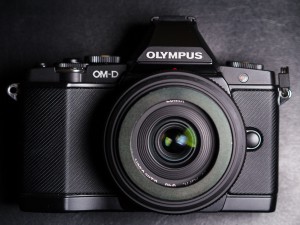
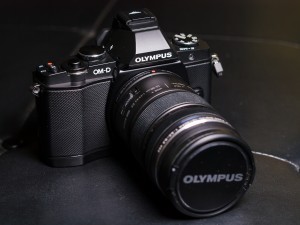
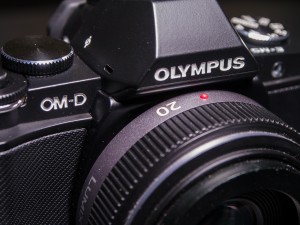
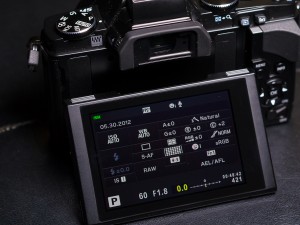
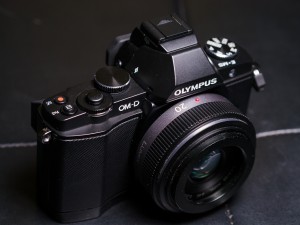
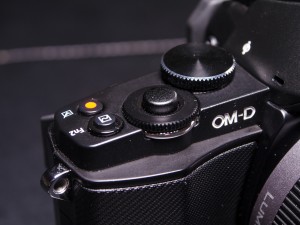
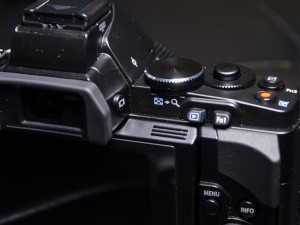
No information about OM-D image quality compared to existing Olympus Pen cameras. Seems to be a taboo subject on many review sites – especially those that generate income from OM-D sales. Could that be because the truth is OM-D offers no IQ improvement over 3rd generation Pens (except in low light). And we already know one first generation Pen (E-PL1) beats all 3rd generation Pens, hence it potentially beats OM-D too. So could the embarrassing truth be that the dirt cheap E-PL1 beats the OM-D (except in low light)?
I didn’t mention image quality because from everything I have seen, it is a bit better than the Panasonic G3, which is considered to be a very good performer. From my days of using the GF1 (which has a similar, if not the same sensor of the E-PL1), I can honestly say that the E-M5 easily beats it in every aspect, especially low light. Numerous other review sites have gone into great detail about the improvements of the sensor in the E-M5.
Verla,
I’ve been testing the OM-D extensively and as far as IQ is concerned its extremely impressive. I think the glass used is absolutely critical regardless of what format camera you are using. I have no experience with other M43 camera’s because the OM-D is my first “small” camera.
I will give you some background on my take on IQ. I’ve owned canon dslr’s from 400D, 50D, 1dmk3, 5d, 5dmk2 and a long list of Pro “L” lenses. The OM-D interms of IQ is fantastic compared to the first 3 camera’s I’ve mentioned. The IQ is noticeably better than an older flagship 5000 dollar 1dmk3.
I do not justify my purchases. I’m quite demanding on IQ when it comes to my camera gear. I prefer the IQ of the OM-D vs the Canon 7D.
The OM-D is a great camera in the studio too. Its extremely difficult to tell the files from the OM-D to a 5d full frame. For static/slow moving subjects the OM-D is an amazing little camera. The OM-D wont substitute my Canon full frames for accuracy in selected focus points but it certainly could produce excellent files as a backup camera for 8×10 or larger prints.
Thanks for the article. I notice you using the Panasonic 20mm. Have you noticed banding noise at higher ISOs like I have with this combination?
I haven’t used the 20mm enough at high ISOs to make a statement, but I haven’t noticed it yet. Most of my shooting has been in decent light and I don’t normally go above ISO 1600.
I’ve been using the 20mm Lumix with the E-M5 and have gotten fantastic results in a low-light situation where I was shooting at 1/40 second, f1.7, and ASA 1600 in a sparsely-lit restaurant and I was able to get tack-sharp and perfectly exposed 8×10″ prints, and in snapshot situations as well. It’s a fantastic lens for the E-M5 and I’ve never seen the banding or the lock-ups which one reader on another site reported. As a matter of fact, the 20mm is my favorite lens for the camera and I also have the 12-50, and the 45-150 Olympus lenses. A 45mm Olympus lens is scheduled to arrive today.